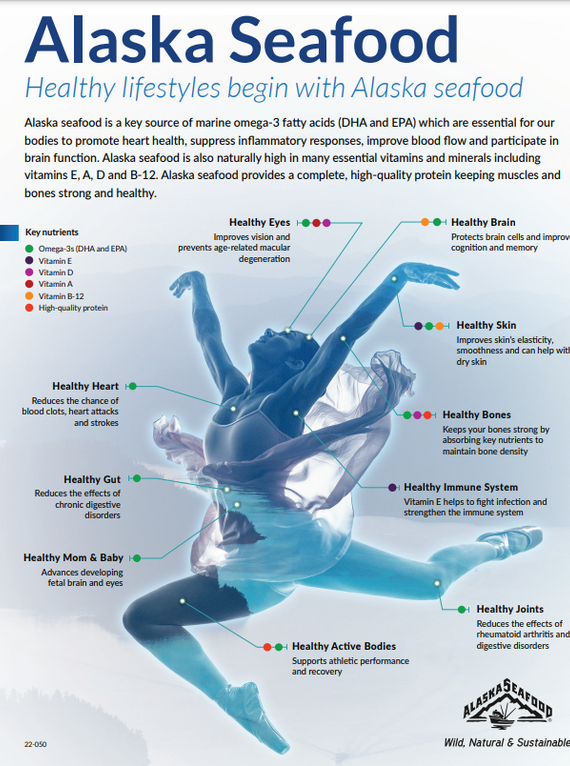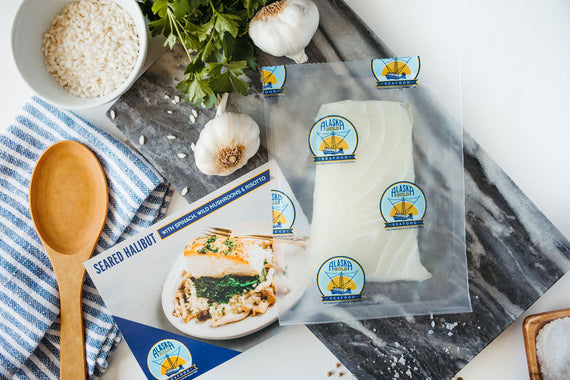
“The freshest tasting seafood is that which has been frozen shortly after harvest and remains that way until cooked.” Jane Brody, NY Times Nutrition

Q: Fresh is better than frozen seafood, right?
Here is a question/concern we hear from some new customers: Fresh or Frozen Seafood?
What’s essential is starting with a fresh product. Our line-caught salmon, halibut, sablefish and albacore tuna is handled One Fish At A Time with a focus on quality and meticulous care in handling the details.
When a fish comes out of the water, the clock starts ticking. Our co-op has a long history of being at the forefront of how to do everything possible to keep that clock from ticking too fast. The first unique thing we do is we catch the fish by hook and line, giving the fisherman time to clean the fish and bleed. Guts and blood are the first thing in a fish to degrade and cause that off fishy flavor. Fish caught in nets tend to sit on the deck of the boat for too long. They get thrown around and bruised. Our fishermen take a lot of care with their fish use a micropipette to get every drop of blood out. Then they blast freeze the salmon and tuna at sea, stopping the proverbial clock and locking in freshness, flavor and nutrients. Halibut and sablefish are carefully iced to maintain freshness until they’re blast frozen at the plant. All of our procedures maintain an extraordinary level of freshness.
In the seafood industry, there are numerous interpretations of “fresh” What is sold as “fresh” to restaurants and fish mongers is fish that has never been frozen. Seafood Producers Cooperative sells a good amount of its fish to restaurants and retailers fresh never frozen. Yet we sell an even larger amount of our fish frozen because more and more buyers understand that frozen fish, when handled correctly, is “fresher than fresh.” Given the fact that the fish usually travels a good distance before being eaten, you can quickly see how a “fresh” fish some times is not going to be as fresh as a frozen fish. We’ve been doing this a long time and believe we have the best frozen seafood available.
Because the headaches in logistics are made much simpler once a fish is frozen, frozen fish also has a much smaller carbon footprint than a fresh fish. All of these factors make a frozen fish a superior product to a “fresh” fish.
See how the Frozen At Sea process works below.
The salmon available on AlaskaGoldBrand.com is flash frozen at sea, making for the highest quality salmon available.

Blast freezing salmon at sea minutes after harvest locks in its natural flavors.
Blast freezing salmon at sea at -40 F locks in the salmon’s unique flavors, stopping decomposition at a cellular level within minutes of being caught, which makes for a salmon that is Fresher than Fresh.
Properly cutting and gutting the fish is also really important. Pressure bleeding the fish with a pipette also makes a big difference. The SPC Difference really is paying attention to all of these details–catch method, landing method, cuts, bleeding, state of the art freezing technologies. Quality is what we take great pride in.
Lastly, if you want sashimi-grade fish, frozen is the only way to go for species like salmon and tuna. Freezing fish at low temperatures makes it possible to eat salmon sashimi or to cure salmon and eat it safely.
Our fish is caught and frozen quickly to preserve freshness. Being troll caught makes for a fresher taste. You’ll taste the difference for sure!
When you start with a high-quality fish, handle it correctly, and take care to get it to customers, you get the freshest fish available.



